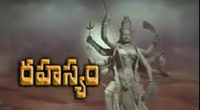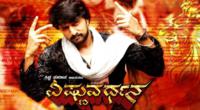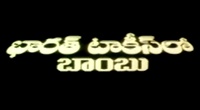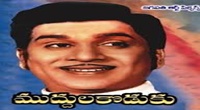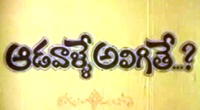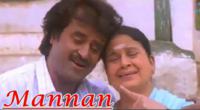
The Vedas (/?ve?d?z
Vedas are also called ?ruti ("what is heard") literature, distinguishing them from other religious texts, which are called sm?ti ("what is remembered"). The Veda, for orthodox Indian theologians, are considered revelations seen by ancient sages after intense meditation, and texts that have been more carefully preserved since ancient times. In the Hindu Epic the Mahabharata, the creation of Vedas is credited to Brahma. The Vedic hymns themselves assert that they were skillfully created by Rishis (sages), after inspired creativity, just as a carpenter builds a chariot.
There are four Vedas: the Rigveda, the Yajurveda, the Samaveda and the Atharvaveda. Each Veda has been subclassified into four major text types – the Samhitas (mantras and benedictions), the Aranyakas (text on rituals, ceremonies, sacrifices and symbolic-sacrifices), the Brahmanas (commentaries on rituals, ceremonies and sacrifices), and the Upanishads (texts discussing meditation, philosophy and spiritual knowledge). Some scholars add a fifth category – the Upasanas (worship).
The various Indian philosophies and denominations have taken differing positions on the Vedas. Schools of Indian philosophy which cite the Vedas as their scriptural authority are classified as "orthodox" (?stika). Other ?rama?a traditions, such as Lokayata, Carvaka, Ajivika, Buddhism and Jainism, which did not regard the Vedas as authorities, are referred to as "heterodox" or "non-orthodox" (n?stika) schools. Despite their differences, just like the texts of the ?rama?a traditions, the layers of texts in the Vedas discuss similar ideas and concepts.
Contents
Etymology and usage
The Sanskrit word véda "knowledge, wisdom" is derived from the root vid- "to know". This is reconstructed as being derived from the Proto-Indo-European root *u?eid-, meaning "see" or "know".
The noun is from Proto-Indo-European *u?eidos, cognate to Greek (?)????? "aspect", "form" . Not to be confused is the homonymous 1st and 3rd person singular perfect tense véda, cognate to Greek (?)???? (w)oida "I know". Root cognates are Greek ????, English wit, etc., Latin vide? "I see", etc.
The Sanskrit term veda as a common noun means "knowledge". The term in some contexts, such as hymn 10.93.11 of the Rigveda, means "obtaining or finding wealth, property", while in some others it means "a bunch of grass together" as in a broom or for ritual fire.
A related word Vedena appears in hymn 8.19.5 of the Rigveda. It was translated by Ralph T. H. Griffith as "ritual lore", as "studying the Veda" by the 14th century Indian scholar Sayana, as "bundle of grass" by Max Müller, and as "with the Veda" by H.H. Wilson.
Vedas are called Ma?ai or Vaymoli in parts of South India. Marai literally means "hidden, a secret, mystery". In some south Indian communities such as Iyengars, the word Veda includes the Tamil writings of the Alvar saints, such as Divya Prabandham, for example Tiruvaymoli.
Chronology
The Vedas are among the oldest sacred texts. The Samhitas date to roughly 1700–1100 BC, and the "circum-Vedic" texts, as well as the redaction of the Samhitas, date to c. 1000-500 BC, resulting in a Vedic period, spanning the mid 2nd to mid 1st millennium BC, or the Late Bronze Age and the Iron Age. The Vedic period reaches its peak only after the composition of the mantra texts, with the establishment of the various shakhas all over Northern India which annotated the mantra samhitas with Brahmana discussions of their meaning, and reaches its end in the age of Buddha and Panini and the rise of the Mahajanapadas (archaeologically, Northern Black Polished Ware). Michael Witzel gives a time span of c. 1500 to c. 500-400 BC. Witzel makes special reference to the Near Eastern Mitanni material of the 14th century BC, the only epigraphic record of Indo-Aryan contemporary to the Rigvedic period. He gives 150 BC (Patañjali) as a terminus ante quem for all Vedic Sanskrit literature, and 1200 BC (the early Iron Age) as terminus post quem for the Atharvaveda.
Transmission of texts in the Vedic period was by oral tradition, preserved with precision with the help of elaborate mnemonic techniques. A literary tradition is traceable in post-Vedic times, after the rise of Buddhism in the Maurya period, perhaps earliest in the Kanva recension of the Yajurveda about the 1st century BC; however oral tradition of transmission remained active. Witzel suggests the possibility of written Vedic texts towards the end of 1st millennium BCE. Some scholars such as Jack Goody state that "the Vedas are not the product of an oral society", basing this view by comparing inconsistencies in the transmitted versions of literature from various oral societies such as the Greek, Serbia and other cultures, then noting that the Vedic literature is too consistent and vast to have been composed and transmitted orally across generations, without being written down. However, adds Goody, the Vedic texts likely involved both a written and oral tradition, calling it a "parallel products of a literate society".
Due to the ephemeral nature of the manuscript material (birch bark or palm leaves), surviving manuscripts rarely surpass an age of a few hundred years. The Sampurnanand Sanskrit University has a Rigveda manuscript from the 14th century; however, there are a number of older Veda manuscripts in Nepal that are dated from the 11th century onwards.
Ancient universities
The Vedas, Vedic rituals and its ancillary sciences called the Vedangas, were part of the curriculum at ancient universities such as at Taxila, Nalanda and Vikramashila.
Categories of Vedic texts
The term "Vedic texts" is used in two distinct meanings:
Vedic Sanskrit corpus
The corpus of Vedic Sanskrit texts includes:
- The Samhitas (Sanskrit sa?hit?, "collection"), are collections of metric texts ("mantras"). There are four "Vedic" Samhitas: the Rig-Veda, Sama-Veda, Yajur-Veda, and Atharva-Veda, most of which are available in several recensions (??kh?). In some contexts, the term Veda is used to refer to these Samhitas. This is the oldest layer of Vedic texts, apart from the Rigvedic hymns, which were probably essentially complete by 1200 BC, dating to c. the 12th to 10th centuries BC. The complete corpus of Vedic mantras as collected in Bloomfield's Vedic Concordance (1907) consists of some 89,000 padas (metrical feet), of which 72,000 occur in the four Samhitas.
- The Brahmanas are prose texts that comment and explain the solemn rituals as well as expound on their meaning and many connected themes. Each of the Brahmanas is associated with one of the Samhitas or its recensions. The Brahmanas may either form separate texts or can be partly integrated into the text of the Samhitas. They may also include the Aranyakas and Upanishads.
- The Aranyakas, "wilderness texts" or "forest treaties", were composed by people who meditated in the woods as recluses and are the third part of the Vedas. The texts contain discussions and interpretations of ceremonies, from ritualistic to symbolic meta-ritualistic points of view. It is frequently read in secondary literature.
- Older Mukhya Upanishads (B?had?ra?yaka, Chandogya, Ka?ha, Kena, Aitareya, and others).
The Vedas (sruti) are different from Vedic era texts such as Shrauta Sutras and Gryha Sutras, which are smriti texts. Together, the Vedas and these Sutras form part of the Vedic Sanskrit corpus.
While production of Brahmanas and Aranyakas ceased with the end of the Vedic period, additional Upanishads were composed after the end of the Vedic period.
The Brahmanas, Aranyakas, and Upanishads, among other things, interpret and discuss the Samhitas in philosophical and metaphorical ways to explore abstract concepts such as the Absolute (Brahman), and the soul or the self (Atman), introducing Vedanta philosophy, one of the major trends of later Hinduism. In other parts, they show evolution of ideas, such as from actual sacrifice to symbolic sacrifice, and of spirituality in the Upanishads. This has inspired later Hindu scholars such as Adi Shankara to classify each Veda into karma-kanda (???? ????, action/ritual-related sections) and jnana-kanda (????? ????, knowledge/spirituality-related sections).
Shruti literature
The texts considered "Vedic" in the sense of "corollaries of the Vedas" is less clearly defined, and may include numerous post-Vedic texts such as the later Upanishads and the Sutra literature. Texts not considered to be shruti are known as smriti (Sanskrit: sm?ti; "the remembered"), or texts of remembered traditions. This indigenous system of categorization was adopted by Max Müller and, while it is subject to some debate, it is still widely used. As Axel Michaels explains:
These classifications are often not tenable for linguistic and formal reasons: There is not only one collection at any one time, but rather several handed down in separate Vedic schools; Upani?ads ... are sometimes not to be distinguished from ?ra?yakas...; Br?hma?as contain older strata of language attributed to the Sa?hit?s; there are various dialects and locally prominent traditions of the Vedic schools. Nevertheless, it is advisable to stick to the division adopted by Max Müller because it follows the Indian tradition, conveys the historical sequence fairly accurately, and underlies the current editions, translations, and monographs on Vedic literature."
The Upanishads are largely philosophical works, some in dialogue form. They are the foundation of Hindu philosophical thought and its diverse traditions. Of the Vedic corpus, they alone are widely known, and the central ideas of the Upanishads are at the spiritual core of Hindus.

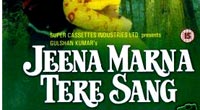
.jpg)
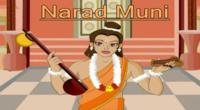
.jpg)
.jpg)

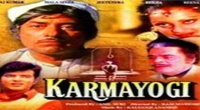
.jpg)
